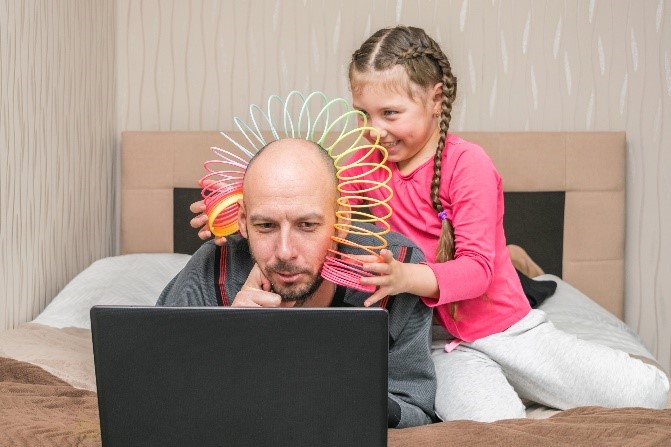 The COVID pandemic and rise of the Omicron variant has necessitated shifting what had been classroom instruction to an online format. That has created opportunities for more effective approaches, for example, breaking previously “dense-pack” day-long instruction into smaller segments (“bite-sized learning”) which helps to avoid cognitive overload and takes advantage of spaced learning.
The COVID pandemic and rise of the Omicron variant has necessitated shifting what had been classroom instruction to an online format. That has created opportunities for more effective approaches, for example, breaking previously “dense-pack” day-long instruction into smaller segments (“bite-sized learning”) which helps to avoid cognitive overload and takes advantage of spaced learning.
But teaching in a virtual environment also presents new challenges, particularly when it comes to maintaining attention.
Attention is a critical step in the learning process and one of the most common points of failure. People can only learn what they pay attention to. That is why Robert Gagne made “gain attention” the first of his nine events of effective instruction.
So, it is important to start a course with something that will gain the learner’s attention. When you are teaching adults in corporate training programs, you need to answer the WIIFM (What’s in it for me?) question if you want their attention and active participation. That doesn’t mean listing the learning objectives: it means clearly and credibly selling the benefits of mastering the material: how will it help them in their jobs and/or lives outside of work?
But as John Medina pointed out in his best-selling book, Brain Rules, it is not enough to gain attention at the beginning of a course of instruction, you must continually re-gain it at intervals throughout the program. That’s because paying attention is hard work. Over time, attention begins to drift, even if the presenter and topic are interesting. People start to think about other things: tasks they need to accomplish, issues at home, and upcoming vacation, whatever. The more boring the presentation, the quicker this happens.
The problem is that once learners’ attention begins to drift, they are no longer focused on the instruction, and learning suffers. It’s been shown that just hearing a cell phone ring – even though it is not your own – is enough to distract attention and measurably impact learning.
The problem of paying attention is amplified many times over in a virtual environment because there are so many more potential distractions, from children, to dogs, to delivery persons to the ever-present temptation to try to multi-task: open another window and do email, text, or type a report.
What is an instructor to do? You need to first acknowledge the reality. That is, you must build into the instructional plan specific actions to recapture attention every few minutes, what Medina calls “hooks.” While there are a variety of methods that can be used – from presenting surprising facts, to showing a provocative video, the best are those that require active engagement of the audience, such as answering a question or providing examples.
You also need to pick up the pace when teaching virtually. Use many more slides and visual aides than you might in a live session. Do not leave the same image burning on the screen too long. The learners will lose interest. Keep sessions reasonably short and give people breaks. No one can pay attention through a full day of virtual sessions.
If you want to learn more about how to make all corporate training programs more effective, join us for the Online 6Ds Workshop commencing February 1st. It will be one of the best investments you will ever make in your own career. You can learn more and register at: https://the6ds.com/open-enrollment/
